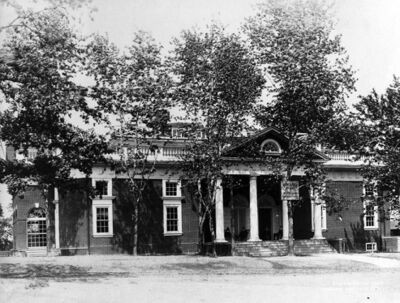Virginia
 | |
| Location | The Trail |
|---|---|
| No. of Buildings | 1 |
| Construction | |
| Construction Cost | $17,000 ($512,707 in 2021) |
| Architecture | |
| Architect | C. Mornton Mayre, of Washington, D. C. |
| Dimensions | 133' x 99' |
Virginia is represented among the State buildings on the World's Fair by a reproduction of Monticello (Little Mountain),
the home of the President who directed the purchase of Louisiana. It had a picturesque site off the Plateau of States on The Trail.
Description[edit | edit source]
The Virginia Building was a replica of Monticello. The bright red of the bricks was simulated, and contrasted with the white woodwork. Jefferson had in mind the Grand Triannon seen by him in France when he planned the house. France reproduced that building at the Exposition, and the similarity of the facades can be noted.
The grand salon was entered first, with its high-pitched ceiling and its gallery, giving the only access from one side of the house to the other of the second floor rooms. Acoustic properties were in Jefferson's mind when he planned that room, for he was a musician of tender susceptibilities. At one side was a Conover grand piano.
To the right is a colonial parlor, in which there is not an article less than one hundred and fifty years old.
Back from the entrance is the University of Virginia room. In the original Virginia Building Monticello it was the state dining-room. There are oils of General J. B. Stuart and General Robert E. Lee, and the Gait statue.
In the state dining-room of the reproduction is the only French furniture. In the balance of the house the furnishings are pure colonial.
It contained a life size statue of the Jefferson, contributed by the University he founded.
